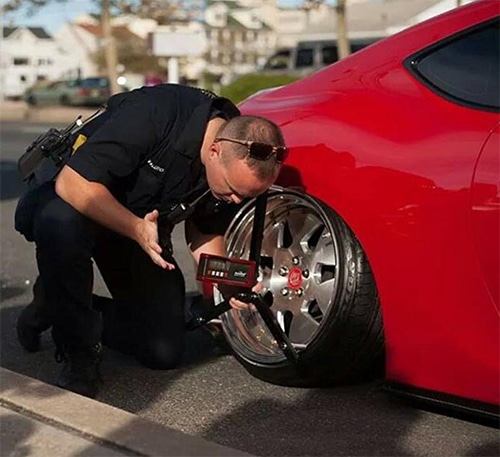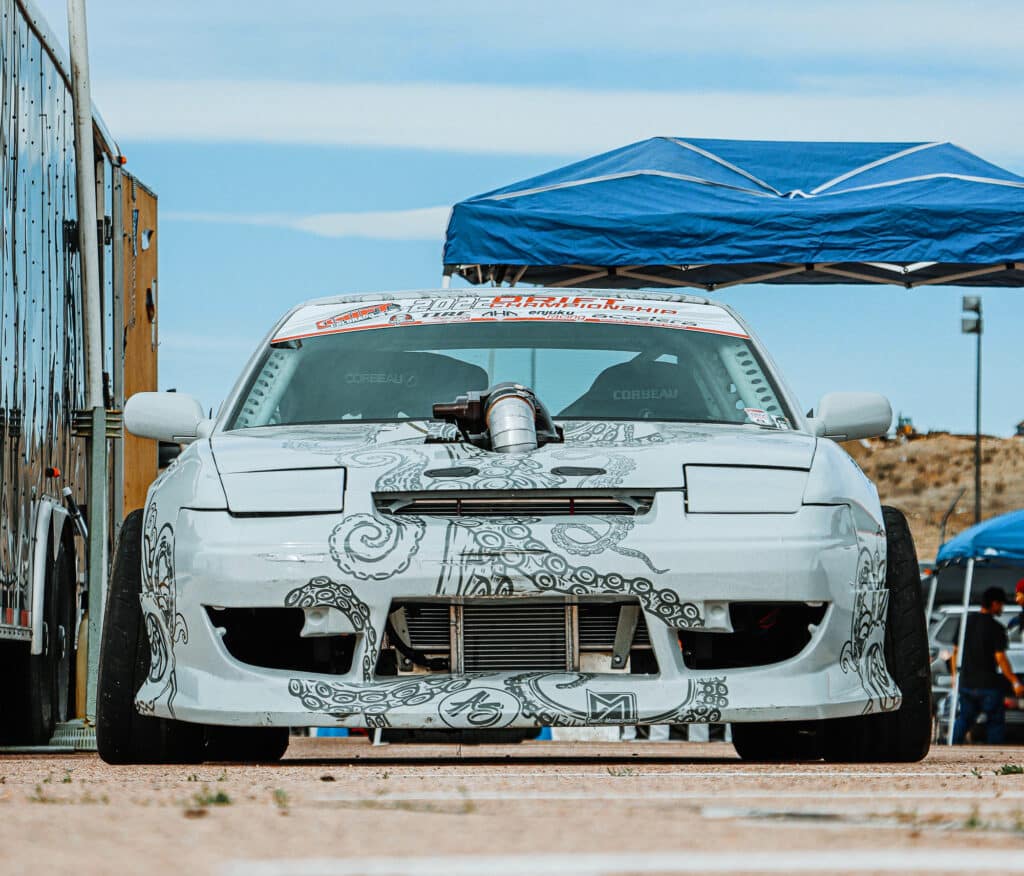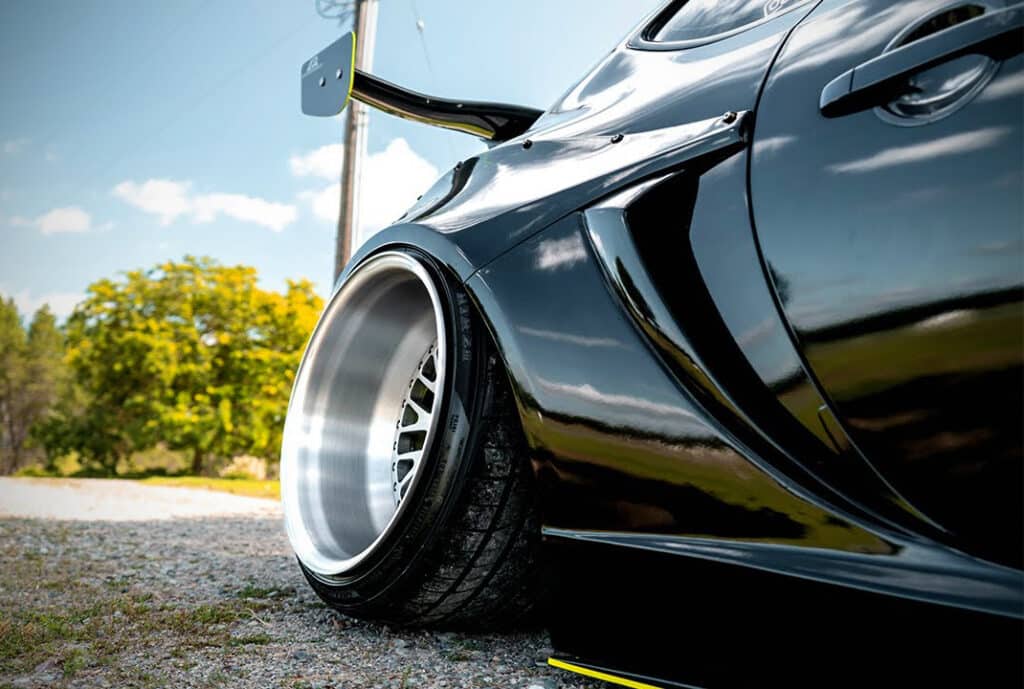Love it or hate it, stance culture is just as distinctive as it is polarizing. It’s no secret that it’s a very divisive trend, and it’s definitely here to stay. That said, most people grow out of it rather quickly.
If you’re a right-brained engineer, you might have a hard time wrapping your head around why someone would willingly ruin their car’s drivability for the sake of visual appeal.
But as it turns out, there’s a lot more to it than meets the eye. The first thing that everyone can agree on is that stance is about form, not function — not in the slightest.
Ask any stance car owner why they did it, and the standard response is usually something along the lines of “because I could” or “it started with overfenders then one thing led to another”.
Some enthusiasts view stanced cars as an expression of the owner’s creativity and personal style, while others question their practicality and safety.
In this article, we’ll explore the legal implications of stanced cars, the motivations behind this trend, the types of cars that are commonly stanced, and the driving force behind this automotive movement.
What Are Stanced Cars?

Stanced cars typically feature wide wheels, fender flares, stretched tire walls, and some degree of negative camber.
The number one thing people associate with stanced cars is the negative camber angle. It is an alignment specification that affects the angle of the wheel, or how it’s slanted inward at the top compared to the car’s body.
Adjusting the camber angle this way without lowering the car would look downright ridiculous, so owners usually combine negative camber with an extremely low ride height.
This can be achieved using a static setup, such as shorter lowering springs or coilovers, or going non-static, which requires air suspension or air airbags.
Usually, when a car is lowered, it automatically creates additional negative camber due to its impact on the overall suspension geometry and wheel articulation.
Camber angle plays a huge role in a car’s handling, and when done correctly, it can massively improve handling characteristics.
Ideally, on a functional racecar, you want no more than -1° to -3° of negative camber.

But stanced cars are a completely different beast, as they feature ridiculous camber angles ranging from -10° to -20°.
Seeing as stanced cars are an expression of style, owners tend to go all out and take the negative camber angle to an extreme. This style is also referred to as demon camber or Onikyan.
In some cases, the wheels won’t even fit under the arches without excessive camber since the car has been slammed to the ground.
Speaking of wheels, properly stanced cars also need a cool set of rims in addition to the negative camber and low ride height.
Obviously, there are a bunch of different wheel styles to choose from, but in general, stance enthusiasts tend to go for wide, negative offset rims.
This allows them to push the wheels out as far as possible, and then fit narrower tires to get that important stretched tire look.
Obviously, this requires a lot of modifications, hacking, chopping, and fender rolling. For the latter, you’re going to want the best fender roller tools.
The typical result is broken CV axles, destroyed oil pans, worn-out tires, and baconed-up fenders. That’s the price you pay for that hellaflush look.
Now that you know what defines a stanced car, you’re probably wondering if it’s even legal to do this.
Are Stanced Cars Illegal?
The legality of stanced cars varies depending on jurisdiction and local regulations.
In many places, there are rules regarding car modifications that could potentially impact safety or roadworthiness.

As much as we love modified cars, there’s no doubt that extreme lowering and excessive camber can compromise the handling and safety of your car, especially in adverse road conditions.
Due to the excessive negative camber angles, stanced cars often suffer from excessive tire wear, which can increase the potential for accidents.
In addition, stretched tires can be dangerous since the sidewall won’t be able to support the same amount of weight as a normal wheel and tire setup.
Stretched tires can result in de-beading or tearing the sidewall, and the more stretch, the bigger the risk.
For these reasons, some regions have laws in place that prohibit modifications that compromise a car’s stability, visibility, or braking capabilities.
In some places, cars with severe modifications risk getting pulled over by law enforcement and deemed unfit for the road.
To navigate this legal minefield, enthusiasts should strike a balance between personal expression and adherence to safety and roadworthiness standards.
Why Do People Stance Their Cars?

We should point out that all cars have a stance, so to speak. It simply refers to how the car sits, but stanced cars take things to the extreme.
Some people like their car to have a purposeful look, whether it’s to make it appear more aggressive or to make it handle better.
Stanced cars, on the other hand, often don’t look particularly purposeful at all, at least not the more extreme builds.
Sure, there are milder builds out there that offer a great driving experience.
But the ones running demon camber, tires that are nowhere near as wide as the wheels, and scraping the front lip on the flattest of surfaces are built purely for visual appeal.

So, what is the point of stanced cars?
While the motivations behind stancing cars may be multifaceted, it’s often rooted in a desire for individuality and self-expression, not to mention it’s just cool to drive a car that turns heads.
These cars serve as a canvas where the owners can create a visual representation of their personality and style.
They offer a unique way to break away from the conventional norms of automotive design and embrace a more daring, attention-grabbing aesthetic.
Stanced cars are a manifestation of the stance culture, which emphasizes pushing boundaries and challenging norms.
In a subculture where a sense of community can be found among those who appreciate the artistry and craftsmanship that’s gone into building a car, a stanced car is a statement, a conversation starter, and a way to forge connections with fellow enthusiasts.

Yes, to some degree, it’s possible to build a stanced car that offers improved handling and drivability, but in many cases, this is no longer viewed as the most important part of the build.
Haters will be quick to blame social media for this trend, but it isn’t something new, as slammed cars and lowriders were around long before stance ever became a thing, and those usually aren’t known for their practicality either.
We live in a weird time where social media is in a way killing, or at least distorting, car culture as we know it.
Yet, at the same time, it’s also one of the things keeping it alive, as it allows anyone with a car and an internet connection to show off their builds.
What Cars Do People Stance?

Anyone with an Instagram account can see that stance culture knows no bounds when it comes to the types of cars that enthusiasts choose to modify.
We’ve seen stanced JDM cars of all types and vintages, stanced muscle cars — both new and classic models — and stanced Euro cars from virtually every manufacturer you can think of.
It’s safe to say that the stance treatment can be applied to a wide variety of platforms, but here’s a glimpse into some of the popular types of cars that often find themselves undergoing this unique customization.

It’s fair to say stanced cars have a particularly strong presence in the JDM scene. These cars often boast meticulously curated aesthetics that blend harmoniously with the stance culture ethos.
American muscle cars like the Ford Mustang, Chevrolet Camaro, and Dodge Challenger aren’t immune to the allure of stancing.
Enthusiasts inject a touch of flair into these bruisers by lowering their profiles and outfitting them with oversized wheels that complement their beefy frames.
The sophistication of European luxury and sports cars doesn’t exempt them from the world of stanced modifications.
Brands like BMW, Mercedes-Benz, Audi, Porsche, and even Ferrari have become part of the canvas for enthusiasts looking to fuse high-end performance with eye-catching aesthetics.
Why We Love Stance Culture

In the vast world that is automotive culture, stanced cars certainly stand out from the rest.
While the legality and practicality of stanced cars may be up for debate, the real allure of the stance subculture lies in its power to transform a car into a personal work of art.
Stance isn’t merely about altering a car and staying true to a trend, it’s a movement that resonates with those who have a desire to stand out and challenge norms while appreciating automotive aesthetics and craftsmanship.
We believe stanced cars will continue to carve a unique niche and push boundaries within the automotive landscape for the foreseeable future, reminding us that the road to self-expression can be just as fascinating as the destinations it leads to.
What are your thoughts on stanced cars? Let us know in the comments below, and share this article with a friend if you enjoyed reading it. We appreciate your support!

